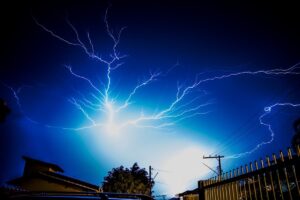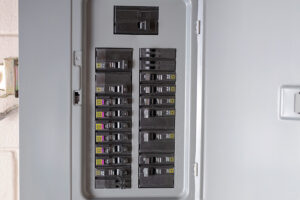Longtime readers of the Prairie Electric Blog will no doubt find themselves circling around the headline of this piece and asking themselves the following questions. “How to measure power consumption? Haven’t we already covered that topic?”
Well, yes and no. We’ve certainly been hard at work building robust pages of content for our readers. Many of our blog topics do go over similar ground, reexamining, and often updating content as necessary.
So while we’ve never written specifically about how to measure power consumption, we’ve definitely written near it! We suggest you look back over a few of these blogs to give yourself a refresher course before we dive into the current topic.
For example, “How to Read an Electric Meter and Calculate Energy Usage” is a good place to start. You’ll find additional information regarding this overall topic in the blogs “How Much Electrical Power Do I Need For My Home” and “Troubleshooting A High Electric Bill.”
And now that we’re done with that fun and informative recap, dear reader, let’s move on to the topic at hand: How to measure power consumption.
Measuring Power Consumption
Measuring power consumption takes just two things:
- the ability to read and compare figures from an electrical meter
- the ability to perform simple arithmetic
Let’s tackle these one at a time, with the help of … ourselves!
Reading A Power Meter
In the piece linked above in which we describe how electric meters work, we write: “There are several different types of meter. Chances are you have the type of electric meter with the spinny dial inside. This is an electromechanical watt-hour meter.
“But even if it’s digital, the method of tabulating the electrical charges are the same. The way your electric company measures your electricity usage and bills you for it is quite ingenious in its simplicity.
“A current passes through your meter (either mechanical analog — i.e., spinny dial — or digital) at your home’s service entrance. The service entrance is where the electrical wires connect from the power lines (or underground) to your home.”
Similarly, in the piece we wrote about reading an electric meter, we describe the process thusly: “To read an analog electric meter, go left to right. Determine where the arrow points.
“If it’s between two numbers, the number to jot down is the lower number of the two. If an arrow points directly at a number, glance at the dial to the right. If it’s past zero, then the dial to the left should be read as the number the arrow is pointing at. If the dial to the right is not past zero, then the dial to its left should be read as the previous number.
“For the last number in the row, you’ll need to find out how your local electric company determines that number. Then keep that in mind each time you read your meter.
“Digital meters (or smart meters) are even easier to read. They display the number itself. So you just have to make note of it and perform the calculation below.”
Calculating Home Energy Consumption
So once you have that number — i.e., your current month’s electric meter reading — all you need to do to measure power consumption is some basic arithmetic.
For the sake of simplicity, let’s lay it out like so:
This month’s reading: 10000
Minus last month’s reading: 9000
This month (10000) minus last month (9000) equals 1,000 kilowatt hours (kWh).
That’s how we measure power consumption or total energy consumers while performing a little electricity monitoring practice. It’s important to do some energy monitoring at home from time to time. Your appliances and smart technology are always drawing power in real time, so keeping tabs is a good way to be more energy efficient — i.e., become your own usage monitor!
One final note: Most electric companies take readings monthly, give or take a day or two. (It also has to do with billing cycles.) To be certain, we suggest contacting your power company and asking them how many days on average is your billing cycle. Your billing statement will give you these numbers as well.
Now that you know how to measure power consumption, you can look at those old blogs with a fresh eye! Learn how to troubleshoot a high electric bill. And figure out a way to determine how much power you need!
Prairie Electric
In the meantime, contact Prairie Electric for all your electrical service needs. We’re proud to be an award-winning electrical service company, working on residential, commercial, transportation, and utility projects.
We’re thrilled to have been named 2018 Subcontractor of the Year by The Daily Journal of Commerce.
We’ve worked in this community for many years, and we look forward to serving our neighbors and fellow businesses for many years to come.
So give us a call today!


